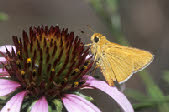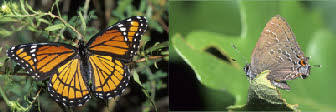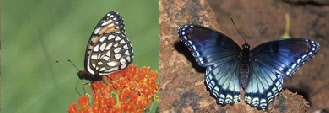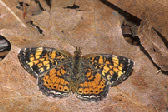The Butterflies of the World Foundation
A Non-





Strymon melinus, Pontotoc Ridge Preserve, Pontotoc County, Oklahoma, 14 June 2008
Ref
#: I-

Strymon melinus, female ovipositing on Purple Prairie Clover, Dalea purpureum, Pasture 12, Little Missouri National Grassland, McKenzie County, North Dakota, 16 July 2005
Ref
#: I-

Strymon melinus, Killdeer Mountains Wildlife Management Area, Dunn County, North
Dakota, 2 May 2004 Ref
#: I-

Strymon melinus, Lexington Wildlife Management Area, Cleveland County, Oklahoma,
22 September 2005 Ref
#: I-

Strymon melinus, Lexington Wildlife Management Area, Cleveland County, Oklahoma,
8 October 2005 Ref
#: I-

Strymon melinus, one half mile south of Lexington Wildlife Management Area, Cleveland
County, Oklahoma, 28 April 2007 Ref
#: I-

Strymon melinus, Lexington Wildlife Management Area, Cleveland County, Oklahoma,
9 May 2009 Ref
#: I-

Strymon melinus, with possible strike from bird illustrating false-
Ref
#: I-
Gray Hairstreak
Strymon melinus, Hübner, 1818
Subfamily Theclinae
Tribe Eumaeini
Taxonomy
The family Lycaenidae is a large and varied worldwide group that has 4,000 to 6,000
species depending on the ever-

Strymon melinus, Lexington Wildlife Management Area, Cleveland County, Oklahoma,
17 May 2010 Ref
#: I-
All photographs, artwork, text and website design are the property of The Butterflies of the World Foundation (unless otherwise stated) and are protected under national and international copyright laws. Photographs, artwork or text on this website may not be reproduced in any way without prior written consent of The Butterflies of the World Foundation.
General Information:
Strymon melinus belongs to the subfamily Theclinae. It is found throughout the U.S. from southern Canada south to Venezuela. This is the most widespread hairstreak in North America. This butterfly is found in open areas from fields, edges of woods, roadsides, gardens and even vacant lots.
Lifecycle:
Males perch all afternoon on small trees and shrubs to seek receptive females. Eggs are laid singly on flowers of host plant which includes a wide variety most often from pea (Fabaceae) and mallow (Malvaceae) families including beans (Phaseolus), clovers (Trifolium), cotton (Gossypium), and mallow (Malva). Eggs are laid singly on flowers of host plant and the young caterpillars feed on flowers and fruits while older ones may eat leaves. Chrysalids hibernate.

Strymon melinus, Lexington Wildlife Management Area, Cleveland County, Oklahoma,
14 May 2009 Ref
#: I-

Strymon melinus, Lexington Wildlife Management Area, Cleveland County, Oklahoma,
14 May 2009 Ref
#: I-

Strymon melinus, Lexington Wildlife Management Area, Cleveland County, Oklahoma,
21 September 2005 Ref
#: I-

Strymon melinus, Lexington Wildlife Management Area, Cleveland County, Oklahoma,
20 September 2009 Ref
#: I-

Strymon melinus, larva with tending Acrobat Ant, Crematogaster missuriensis, on Frostweed
also known as White Crownbeard, Verbesina virginica, Oka’Yanahli Preserve, Johnston
County, Oklahoma, 22 September 2012 Ref #: I-

Strymon melinus, larva with tending Acrobat Ant, Crematogaster missuriensis, on Frostweed
also known as White Crownbeard, Verbesina virginica, Oka’Yanahli Preserve, Johnston
County, Oklahoma, 22 September 2012 Ref #: I-

Strymon melinus, larva with tending Acrobat Ant, Crematogaster missuriensis, on Frostweed
also known as White Crownbeard, Verbesina virginica, Oka’Yanahli Preserve, Johnston
County, Oklahoma, 22 September 2012 Ref #: I-

Strymon melinus, larva with tending Acrobat Ant, Crematogaster missuriensis, on Frostweed
also known as White Crownbeard, Verbesina virginica, Oka’Yanahli Preserve, Johnston
County, Oklahoma, 22 September 2012 Ref #: I-